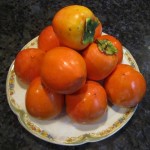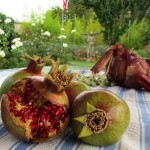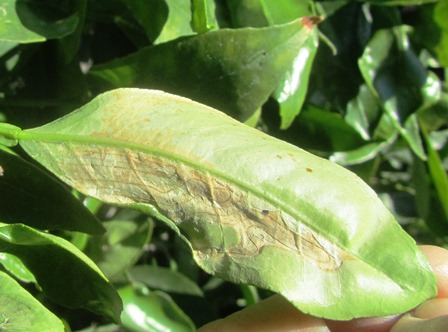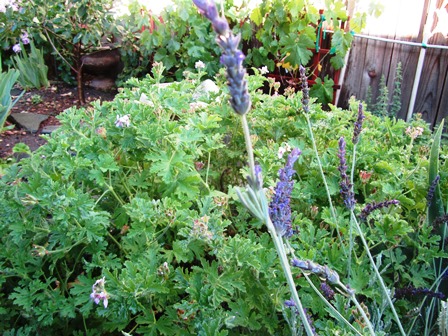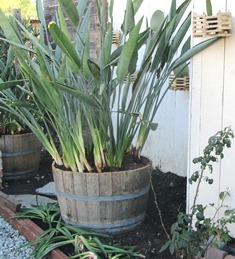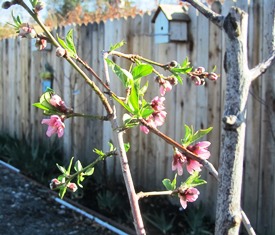Four Reasons to Buy Bare-Root Plants
Mid-February marks the beginning of bare-root season in the Bay Area. Growers ship roses, fruit trees, grapes, and berries in late January through February and March to local nurseries and DIY garden centers. By April, often sales of unsold bare-root plants begin. There are at least four good reasons to buy bare-root plants before spring officially arrives.

- When you buy bare-root trees, berries, grapes, and other plants in late winter (here in the Bay Area), you’ll pay less for them than you will if you wait until the start of spring. The purchase price increases later in the season. When the plants begin leafing out, nurseries will place unsold bare-root plants in pots. Potting an unsold plant involves extra labor as well as the costs for the pot, soil and amendments, mulch, and possibly stakes. Those costs are passed to the shopper.
2. It’s easy to place a bare-root tree right into your garden before its sap is flowing. When it is still “asleep,” it’s not as susceptible to cold and and won’t need as much water as it will when the weather is warm, the plant has leafed out, and the roots are growing and spreading.
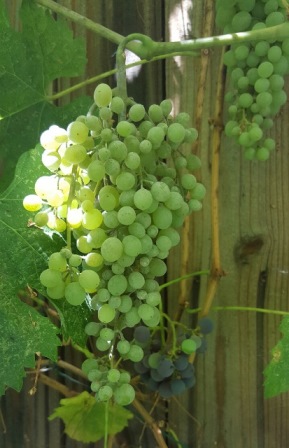
varieties of bare-root grapes.
3. Bare-root buys you time. If you are still planning your garden, you can “heal in” a bare-root plant until you are ready to put it in your garden. You just need to excavate a trench in which you temporarily place the bare-root plant. Mound soil over the roots and water. Let the plant rest until you prepare the permanent planting hole.
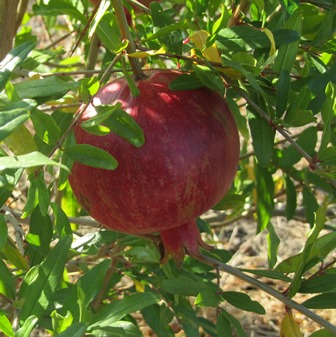
popular because they remain small and fruitful for years.
4. You have an opportunity you won’t get again to inspect the health of the root and its growth. With a bare-root plant, the roots can be examined for problems such as decay or damage. Using sharp pruning shears, you can cut away problem issues. When you buy an already potted plant, you won’t have this option.
Take a moment to visit your local plant seller, nursery, or DIY center to see what plants are available right now. Enjoy the season.
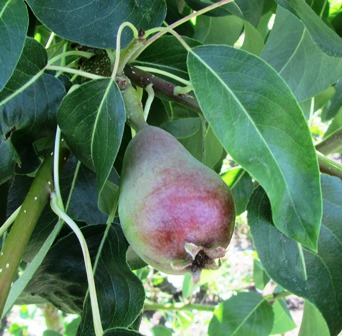
and after three years is producing dozens of late summer pears.
If you enjoy reading about country living topics, check out Meera Lester’s Henny Penny Farmette mystery series. Besides an entertaining mystery, each book includes delicious recipes, strategies for growing heirloom vegetables and fruits, and tips for keeping chickens and bees. These novels and her nonfiction self-help and wellness books are available online and everywhere books are sold.
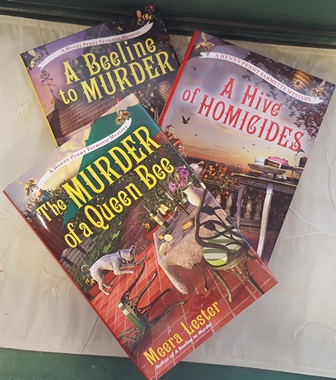
The Joy of Growing Iris
Nothing beats the joy of an early morning walk in a garden and seeing iris plants in full bloom. These beauties are easy to grow, vigorous reproducers, and deer resistant.
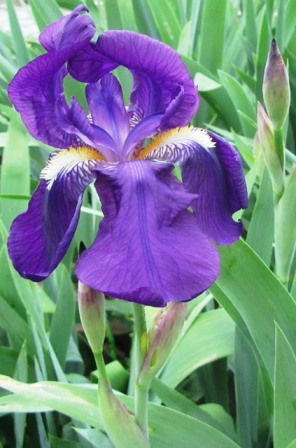
Iris need six to eight hours of sun each day. If you live in a hot climate, your iris will need some shade protection. They perform best in well-drained soil.
The best time of the year to plant iris seems to be late summer or early fall when the temperature does not fall below 40 degrees Fahrenheit.

The rhizomes of iris tend to spread, so you’ll want to divide the clumps every three to four years. The best time to divide them is about six weeks after flowering.
To divide, dig up the clump, pull the rhizomes (roots) from the sides of the mother plant and then plant the new rhizomes, burying them so that the roots are pointing down and the top foliage (even if you have cut it back to a few inches) is exposed. Cover with soil, tamp down, and water well.
Space the iris rhizomes at least one to two feet apart. Planting too close together reduces the number of blooms. There are many varieties of iris to choose for your garden; two of the most common types are Bearded iris and Siberian iris. Plant some of these beauties and experience the joy of seeing them bloom in your garden.

If you enjoy reading about gardening and country living topics, check out my series of cozy mysteries based on my life on the “real” Henny Penny Farmette. The novels are chocked full of tips on gardening, keeping chickens and bees, and growing heirloom vegetables and fruits.

Barnesandnoble.com, and other online bookstores
My novels and self-help, spirituality, and wellness books are offered online and everywhere books are sold. Check out my author’s page on Amazon and also on Simon and Schuster.com.–Meera Lester
Gardening Isn’t Fun When the Air Quality is Foul
I awoke today intending to collect some persimmons and gather in the ripe pomegranates from my garden But the news on my local TV station made me think twice about going outside to work.
The Bay Area air quality would be four times as bad as in Beijing (where many wear masks to avoid breathing the particulate). I’ve lived in the Bay Area since the 1970s and can’t remember suffering through such terrible air quality. Gardening was out of the question.
Our Bay Area air is so awful because of the “Camp Wildfire” that recently broke out up north. The inferno stoked by high winds was so fast-moving that it pretty much destroyed the town of Paradise (near Chico). Those winds also swept the smoke southward into the Bay Area. Although I live spitting distance from Mount Diablo, I couldn’t even see the mountain yesterday or today.
What I could see was a blood-red ball hanging in an opaque sky. Never saw the sun look like that.
Not only are wildfires raging on in Northern California. With Southern California’s Woolsey fire threatening Malibu and a section of nearby Thousand Oaks, I worry about family and friends in SoCal. Also, I am praying for those affected by the recent Thousand Oaks mass shooting. Not only are those folks grief-stricken, they now have to evacuate as fire threatens their community.
The rainy season in Northern California runs from November to April, but unseasonably warm weather (in the 80s F. last week and 70s F. this week) has been the norm. Fire danger remains high until the rains come.
I hope firefighters in our Golden State and everywhere else know how much their work and sacrifices are deeply appreciated.
The smell of smoke outside is overwhelming. So while nothing gives me greater pleasure than being outside working in my garden, I won’t today. Not when I can’t breathe.
_______________________________________________________________________
From here on the Henny Penny Farmette, I write nonfiction self-help books about health, wellness, and spirituality; and for fiction, I write mysteries that incorporate aspects of farmette life like keeping chickens and honeybees and growing heirloom fruits and vegetables.
Find all my books at Amazon.com, through Barnes and Noble, at Kobo Books, and elsewhere online or in traditional bookstores everywhere.

More than 150 rituals for sound mind, strong body, and meaningful connections to the people around you
Spate of Warm Weather Brings Out Early Blosssoms
While schools across the nation are taking snow days because of frigid temperatures, the fruit trees on my Bay Area farmette are showing signs of bud swelling and early blossoming because of a winter heat wave.
Cities around the San Francisco Bay are experiencing early January temperatures of 70-plus degrees Fahrenheit, breaking weather records in some areas. Mother Nature certainly behaves strangely at times.
My five-variety apple tree and the early Desert Gold peach trees are covered with buds that are already showing color. I haven’t as yet gotten around to the winter pruning and spraying with organic oil. Maybe if there’s no wind today, I’ll squeeze that chore in with the others.
I did cut back the Washington navel orange that is infected with Leaf Miner, a pest that’s crossed the United States from Florida. It attacks new leaves, so I’m thinking if I prune and spray now before spring is in full swing, maybe I won’t lose this tree. Curiously, the pest hasn’t widely infected my blood orange trees but there are signs of it in the leaves of our Satsuma seedless tangerines.
Elsewhere, I’ve done deep digging in the chicken run and added some wood chips and leaf material for compost.
The tea roses have been pruned back to 12 to 18 inches and old canes removed. I’m torn between wanting to add more roses in the beds in front of the bamboo plants on the east/west axis of our property or adding more lavender and sunflowers, favored by the bees.
Tomorrow, I’ll open and inspect my bee hives. I left honey stores this past autumn instead of harvesting. But if the bees have gone through all the honey, then I’ll have to add bee food until we get the first early bulb blooms and wildflowers. The French perfume lavender that the bees love is about the only bloom (bee food) in the garden now. Luckily, I planted a lot of it.
The farm chores don’t just seem endless, they are. But whether the work is daily, weekly, or seasonal, there’s something deeply rewarding–even magical–about living close to the earth in harmony with cycles of seasons and the rhythms of nature. But I admit, it is a little strange to have such warm weather when winter has only just started.
Tell the Plants to Go Back to Sleep . . . It’s Still Winter
It’s beach weather along Northern California’s coastline and bare root season technically won’t start for another few weeks. It’s the last Saturday in January–still winter. But the plants are waking up all around Henny Penny Farmette, thanks to the record-breaking, unseasonably warm weather.

Narcissus are grown from bulbs and when massed together in plantings return year after year in a cheerful splash of color
The narcissus seem to have popped up overnight. We tucked three dozen bulbs in a bed the first fall we lived on the farmette. The next spring, they bloomed. Their tall stalks and leaves die during summer, but every spring they emerge to bloom again, creating a dramatic drift of color.
Who doesn’t love working in shirt sleeves? But our gardens need rain and we need the plants to remain dormant while we finish winter chores and get our new chicken house ready.
This week, we finished dividing the strawberries and irises, cutting back the roses, and spraying the fruit trees again.We created another sitting area in the garden under a large apricot tree, laid a gravel floor, and planted Bird of Paradise (Strelitzia reginae) plants in half barrels.
Bird of Paradise plants (also known as crane flower) are indigenous to South Africa. The plants are heat lovers and aren’t too fussy about soil. Planting them in containers is a good idea if you live in an area, as we do, where the winter temperatures fall below 50 degrees Fahrenheit. You simply move them indoors.
The Bird of Paradise foliage makes a nice foil for the plant’s striking blooms of orange, fuchsia, and purple that resemble a crane’s head and beak.
I think it’s too late to tell the plants to go back to sleep. So even if it’s torture to spend a long, languorous day digging in my garden in my shirt sleeves, while the rest of the country is freezing, I suppose I simply must soldier on.
 Facebook
Facebook Goodreads
Goodreads LinkedIn
LinkedIn Meera Lester
Meera Lester Twitter
Twitter




